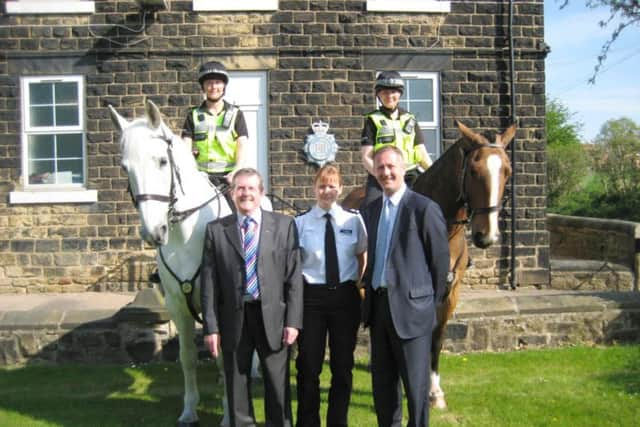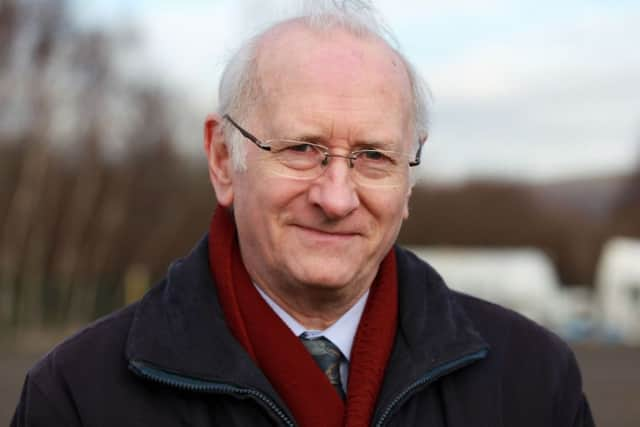Anger as South Yorkshire Police mounted section's move outside the county is delayed


The nine horses, one sergeant and five constables employed by South Yorkshire Police are moving to West Yorkshire Police’s Carr Gate site, near Wakefield, in the latest money-saving collaboration between local forces in the region.
But the mounted officers are said to be “pulling their hair out” because of delays to the move from their current base at Ring Farm in Barnsley, which was originally set to take place last autumn but has still not happened.
Advertisement
Hide AdAdvertisement
Hide AdThe four South Yorkshire Police grooms who look after the horses have been made redundant, meaning officers themselves are having to come in on their rest days to feed them, muck them out and give them exercise.


Once the move is complete, South Yorkshire’s horses and officers will still focus on their own county, but it is believed they will at some point merge with West Yorkshire’s large mounted unit to save money.
In May 2013, South Yorkshire’s then-police and crime commissioner Shaun Wright announced that his force’s mounted section would not be leaving Ring Farm but would be reduced in size.
A decision notice by his successor, Dr Alan Billings, about the creation of “a share/joint mounted unit, with one management structure, based at Carr Gate, Wakefield”, was posted on his website last January, but no public announcement was made.
Advertisement
Hide AdAdvertisement
Hide AdAccording to a report seen by The Yorkshire Post, the grooms supporting the mounted officers have now left the force, with the officers, horses and vehicles transferring to Carr Gate early in 2016.


Neil Bowles of South Yorkshire’s Police Federation, which represents rank and file officers, said he believed Mr Wright kept the force’s mounted section in Barnsley against the wishes of senior officers, because “he thought it was a vote-winner”.
Superintendent Caroline Rollitt, from South Yorkshire Police’s Operational Support Services Unit, said: “The force is continuing to examine how our services can be maintained while we reduce costs.
“Moving the mounted section alongside West Yorkshire Police’s horses at Carr Gate in Wakefield also forms part of the review and will help us to make substantial savings. While the horses will be stabled in Wakefield, they will remain a South Yorkshire Police resource, meaning we remain one of only 11 forces in the UK that continues to operate a mounted section.”
Advertisement
Hide AdAdvertisement
Hide AdDr Billings said the decision to share a mounted section “was agreed last year as part of a general exercise to make savings”.


He said: “South Yorkshire Police would keep its own horses and officers while sharing facilities at Carr Gate – which is not far away and may even be nearer to some parts of South Yorkshire.
“I am sorry the move has not been completed as speedily or smoothly as it should have been and I hope this will now proceed without any more delay, not least so that the staff concerned know where they are.
“South Yorkshire and West Yorkshire are among less than a dozen forces with a mounted division. I wanted to see us maintain the unit, though at less cost.
Advertisement
Hide AdAdvertisement
Hide Ad“They are appreciated by the public and offer reassurance when there are events like football matches where crowds have to be managed – and South Yorkshire is unique in having five significant football teams.”


Neither Humberside nor North Yorkshire Police have their own mounted sections, and those of South Yorkshire and West Yorkshire have been cut back in recent years.
According to South Yorkshire Police’s website, the force’s mounted section has been at Ring Farm since 1992 and its officers deal with a “wide variety of issues”.
It said: “From an elevated vantage point, officers are able to identify and prevent potential issues before they develop.
Advertisement
Hide AdAdvertisement
Hide Ad“The sizes of the horses mean that officers can combat serious issues effectively without the need for large numbers of staff. Crowds can be effectively contained, controlled, manoeuvred and dispersed appropriately.”